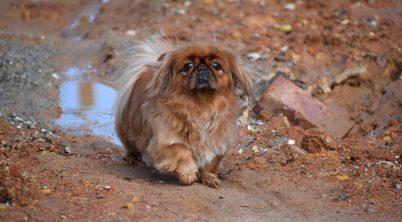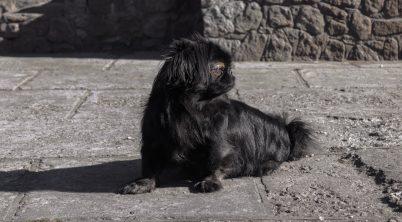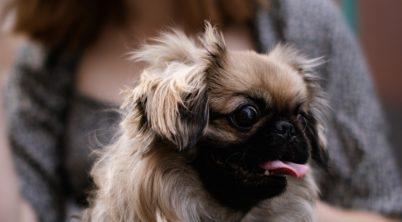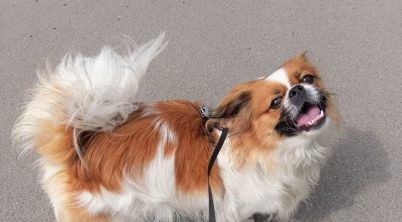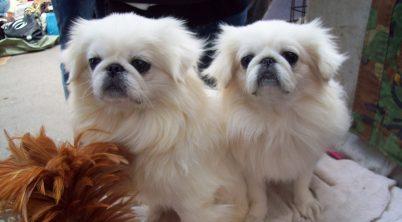Pekingese dogs are known for their expressive nature, often vocalizing their emotions, which can sometimes manifest as crying. This behavior is not merely a reaction to immediate circumstances but is interwoven with the breed’s historical and genetic background. As descendants of royal companions in ancient China, Pekingese have evolved to form strong bonds with their human counterparts, being particularly sensitive to their environment and the presence, or absence, of their owners.
Crying in Pekingese can be indicative of several underlying reasons, from the more obvious physical needs to complex emotional states. Separation anxiety is one common cause, where a dog may cry when feeling lonely or apart from its human family. This breed craves companionship and may display signs of distress when left alone for extended periods. Moreover, Pekingese dogs are also known to vocalize in response to unfamiliar or concerning stimuli, such as the arrival of strangers, which ties into their innate protective instincts.
Understanding the nuances of a Pekingese’s cries involves observing their behavior in conjunction with their environment. Addressing their emotional and physical needs often reduces instances of crying, emphasizing the importance of regular interaction and providing a stable, nurturing environment for these loyal companions. Whether due to emotional distress or simple demands for attention, recognizing and responding to the reasons behind a Pekingese’s tears is fundamental in ensuring their overall well-being.
Understanding Pekingese Emotions
The Pekingese is an affectionate yet independent breed, whose emotions can often lead to vocal expressions such as crying. Recognizing the reasons Pekingese may cry and understanding their communication cues are essential for a harmonious relationship with this dignified dog.
Reasons for Crying
- Separation Anxiety: Pekingese are known for their devotion to their owners. When left alone, they may cry due to separation anxiety, a condition that can be mitigated with gradual desensitization training.
- Health Concerns: As a brachycephalic breed, Pekingese are susceptible to respiratory issues, which can cause discomfort and result in crying. Conditions like dry eye or allergies should be checked by a vet to ensure they are not the cause of distress.
- Emotional Response: They are sensitive dogs that may cry in response to changes in their environment or owner’s behavior, often seeking reassurance through physical closeness or affection.
Communication and Behavior
- Vocalization as a Warning: Pekingese can be protective guard dogs, barking or crying to alert their owners of unfamiliar presence or noises.
- Desire for Attention: These dogs might cry to communicate their need for attention or to express their emotional nature, which craves interaction.
- Behavioral Expression: Training methods should respect the Pekingese’s dignity and independence, as rough methods could lead to vocal expressions of unhappiness or stress.
Pekingese Care and Management
Proper care and management are essential for the well-being of the Pekingese, a breed known for its distinct fur and distinct facial features. This toy breed is brachycephalic, with a short muzzle that can cause breathing problems, especially in hot weather. To ensure their health and comfort, owners should provide regular grooming and be attentive to exercise needs.
Exercise
Pekingese enjoy short walks and indoor play, but they can be prone to overheating due to their thick fur and sensitive respiratory system. It is crucial to keep activities moderate, especially during warm seasons.
Grooming
Regular grooming is a must, including brushing and maintenance for both their overcoat and thick undercoat. They require:
- Weekly brushing to prevent matting
- Seasonal trimming, especially if the dog has a show coat
- Frequent checks for eye issues due to their prominent features
Health Management
Routine vet visits can help spot early signs of progressive retinal atrophy and other health issues. Due to their facial structure, observing for potential breathing difficulties is important.
| Maintenance Need | Recommendations |
|---|---|
| Fur | Weekly brushing, periodic bathing |
| Grooming | Pay special attention to facial wrinkles |
| Teeth | Regular dental check-ups and cleanings |
| Eyes | Clean to prevent infection, check for abnormalities |
| Veterinary Care | Monitor for signs of breathing or eye issues |
Utilizing a confident and knowledgeable approach to their care will ensure that the needs of a Pekingese are met, promoting a happy, healthy life for these regal canines.


